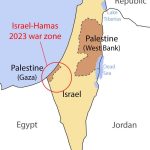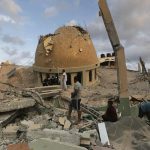The 2023 Israel-Hamas war is part of an ongoing complex situation in the heart of the Middle East with origins dating back to the mid-20th century. Key points of tension regarding borders, settlements, and authority regarding the West Bank, Gaza Strip, and East Jerusalem contribute to continuous territorial disagreements that involve cycles of hostilities, intermittent periods of violence, and ongoing efforts towards ceasefires and negotiations.

The current escalated Israel-Hamas war began in October 2023. The war is primarily located in Gaza and the West Bank, with its impact extending into Syria and Lebanon, further complicating the already complex and long-standing battle. Various international mediators and peacekeepers from the UN, USA and regional powers assist with negotiations and agreement efforts. In contrast, other international organisations and NGOs provide aid and support to the affected populations through the challenges and threats of attacks on aid centres.
With an international and impartial perspective, the architectural environments affected by the complicated Israel-Hamas war will be explored to understand how conflicts and wars shape architecture. An informative, unbiased view will be used to discuss architectural sites, with a responsibility to recognise their cultural and historical significance, ensuring fairness and equality, regardless of their affiliations in the war.
Understanding how the Israel-Hamas war affects the architectural environment is important, as it embodies the cultural and historical characteristics of the region. The built environment bears the scars and innovations of this continuing struggle. Providing a unique perspective on how conflict shapes architecture offers insights into the humanitarian and cultural consequences of the Israel-Hamas war.
Cultural Impact of the Israel-Hamas War on the Architectural Environment
With the location of the Israel-Hamas war near the origin points of the world’s three largest religions, the region is rich in sites of historical significance. As the war continues across this region, the impact on the architectural sites will vary according to intensity and duration, stray arms, military operations, or deliberate targeting of strategic locations, which can harm these sites. As these sites represent the architectural heritage of the region and the cultural and historical memory of its people, their preservation and protection are necessary during and after the war.
Damage to Cultural Heritage
The Israel-Hamas war has already damaged and destroyed numerous architectural and historical sites. In Gaza City, the Al Ahli Hospital, one of the oldest operating hospitals, founded in 1882, was hit in an air strike and an explosion, killing hundreds of innocent people. A few days later, the oldest active church in Gaza, the Church of Saint Porphyrius, was hit in another airstrike. The church complex, built in 425 AD, surrounded by crusader-era walls, was sheltering hundreds of civilians taking refuge from the war.
Additionally, the war has reverberated through Jerusalem, affecting historical and religious sites. The West Bank’s architectural environment has also been affected. Raids are targeted at Bethlehem, Hebron, Jericho, Nablus, and Ramallah refugee camps and residential areas.
With the region encompassing many religious sites of great significance to various faiths, damaging these sites could have profound religious and cultural implications long after the war, impacting interfaith relations.
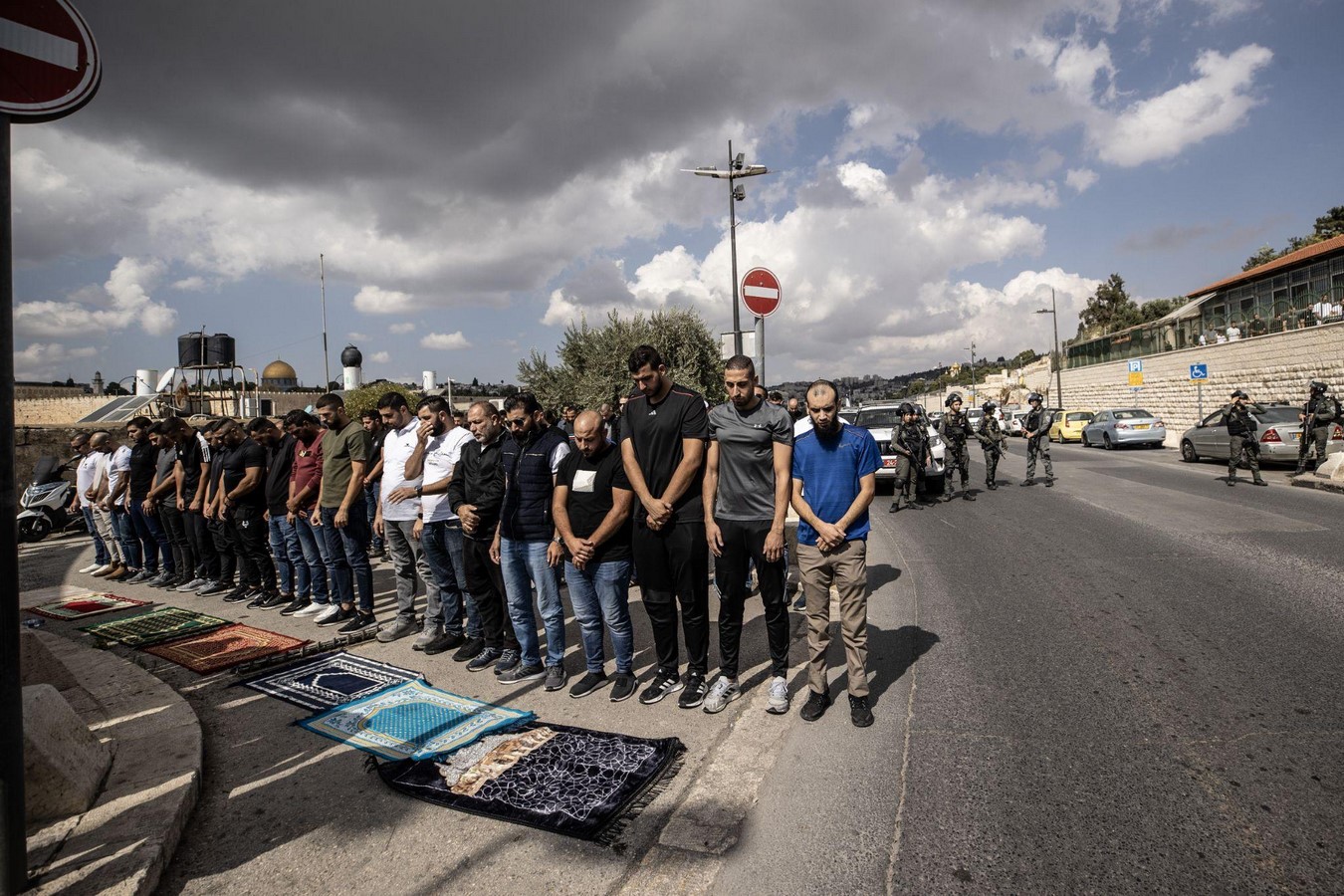
Cultural Artefacts, Documentation, and Identity
The Israel-Hamas war’s deliberate destruction of architectural landmarks, museums and cultural institutions threatens the loss of historical identity, building techniques, design principles, and architectural styles that will have a lasting influence on a region’s cultural heritage.
The invaluable artefacts, records and documentation related to these historical sites and heritage are crucial for understanding and preserving the architectural and historical heritage of the region. The Israel-Hamas war increases the risk of theft and destruction of the historical narrative’s valuable, unique cultural artefacts, including sculptures, paintings, manuscripts, and archaeological finds.
Protecting and conserving these elements of the cultural identity of the local populations of the region is fundamental for maintaining the cultural identity of the region’s communities and its cultural memory and heritage.

Humanitarian Consequences for the Architectural Environment
The Israel-Hamas war has devastated civilian infrastructure, destroying buildings, infrastructure, and public spaces.
Local populations have been displaced, with residential areas particularly hard-hit, damaging or reducing homes to rubble, leading to a housing crisis. Healthcare facilities have been disrupted, challenging access to medical care, while damage to industrial facilities poses environmental concerns. Additionally, educational institutions and media and communication infrastructure have deteriorated, affecting the flow of information. Historical sites will experience neglect, looting, or deterioration of these sites due to the absence of caretakers being displaced.
The humanitarian consequences for the architectural environment are extreme, extending beyond mere structural worries. The Israel-Hamas war has destroyed and damaged architectural environments, forcing local communities to evacuate and creating the need for essential humanitarian services. Losing these architectural elements and environments with sentimental, cultural, and historical significance can psychologically and emotionally impact the affected residents.
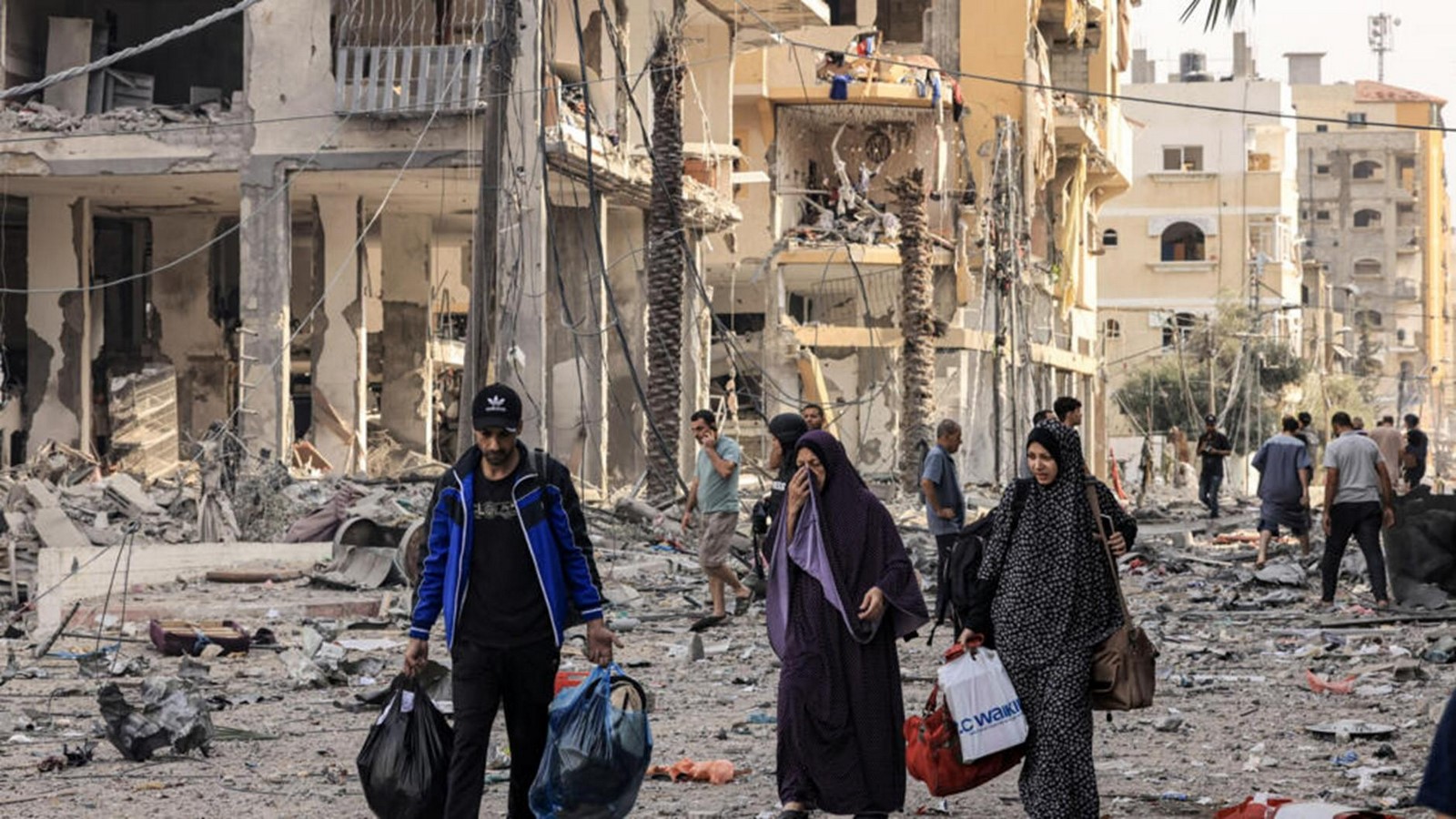
Temporary Architectural Solutions in the Israel-Hamas War
In response to the crisis in the Israel-Hamas war, various temporary architectural solutions have emerged.
Field Hospitals
Field hospitals and temporary medical infrastructure are crucial for addressing the healthcare crisis in active war regions. Often mobile and modular, field hospitals are set up near conflict zones to rapidly provide medical care to the injured, especially in areas with high casualties. Sanitation, infection control, and logistics are accounted for while ensuring operating rooms, wards, and triage areas are laid out efficiently.
Emergency Shelters
During the Israel-Hamas war, displaced populations require immediate shelter. Short-term emergency shelters providing basic protection from the elements can include repurposed structures like schools or community centres, prefabricated housing, or tents. Emergency shelters are simple and functional, focusing on rapid assembly and incorporating cost-effective and durable materials.
Internally Displaced Persons (IDP) Camps
IDP camps are set up to accommodate people who involuntarily leave their homes but remain within their own country.
These camps involve planning for larger populations requiring more sustainable infrastructure than emergency shelters. Layout, access, and long-term usage are considered when designing temporary housing, sanitation facilities, water supply, and access to healthcare for IDP camps.
Refugee Camps
Refugee camps have emerged as a response to the substantial displacement caused by the Israel-Hamas war. While refugee camps are like IDP camps, they are established for those crossing international borders and seeking asylum in another country. They provide a temporary home for refugees.
These temporary settlements face architectural challenges of providing shelter and basic services to a displaced population, often in difficult conditions. The architectural environment within these camps plays a crucial role in the living conditions and well-being of the displaced. Compliance with international standards is necessary and often involves collaboration with various aid organisations. Architects should focus on providing adequate shelter, food distribution, education, and medical facilities.
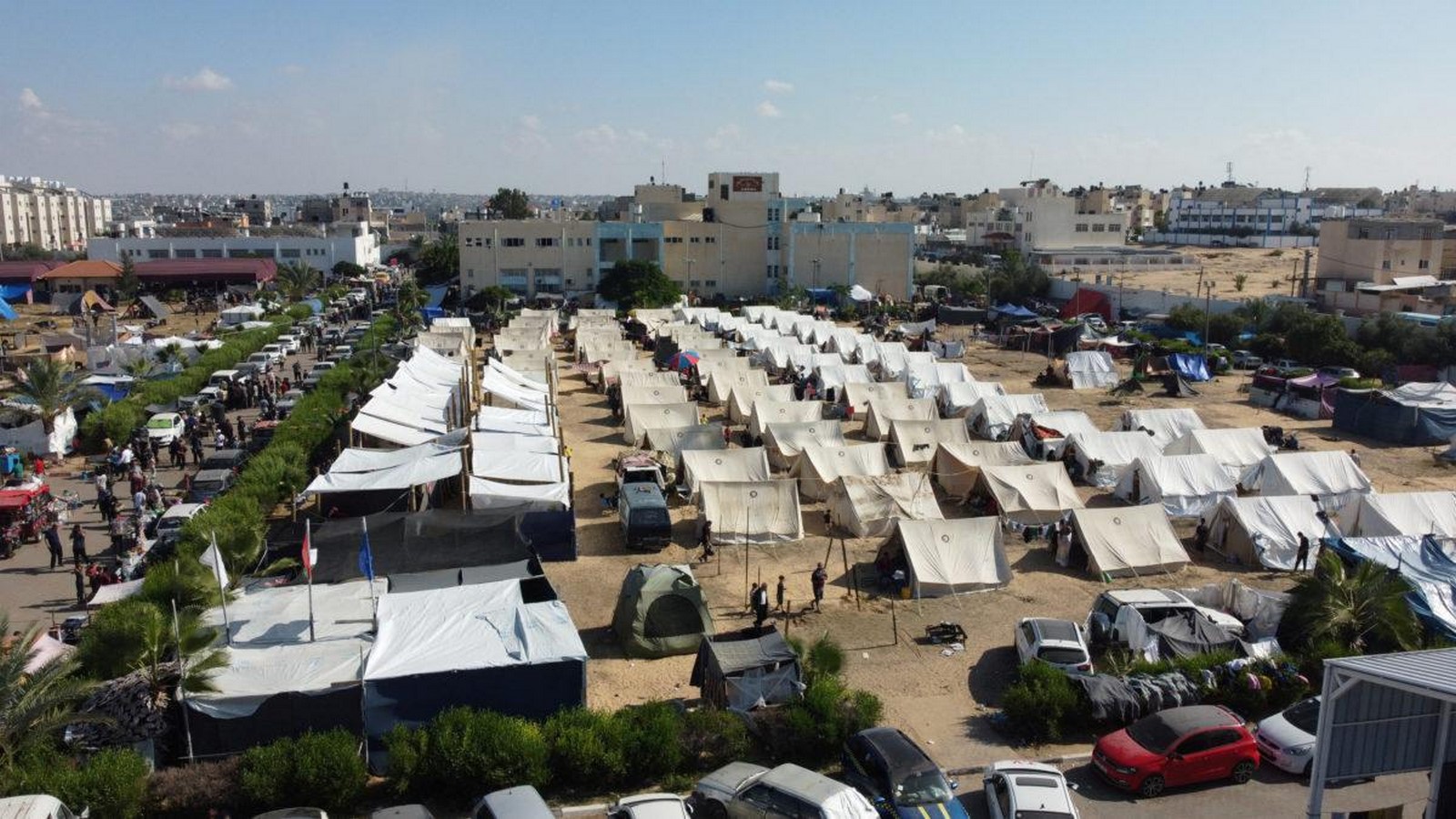
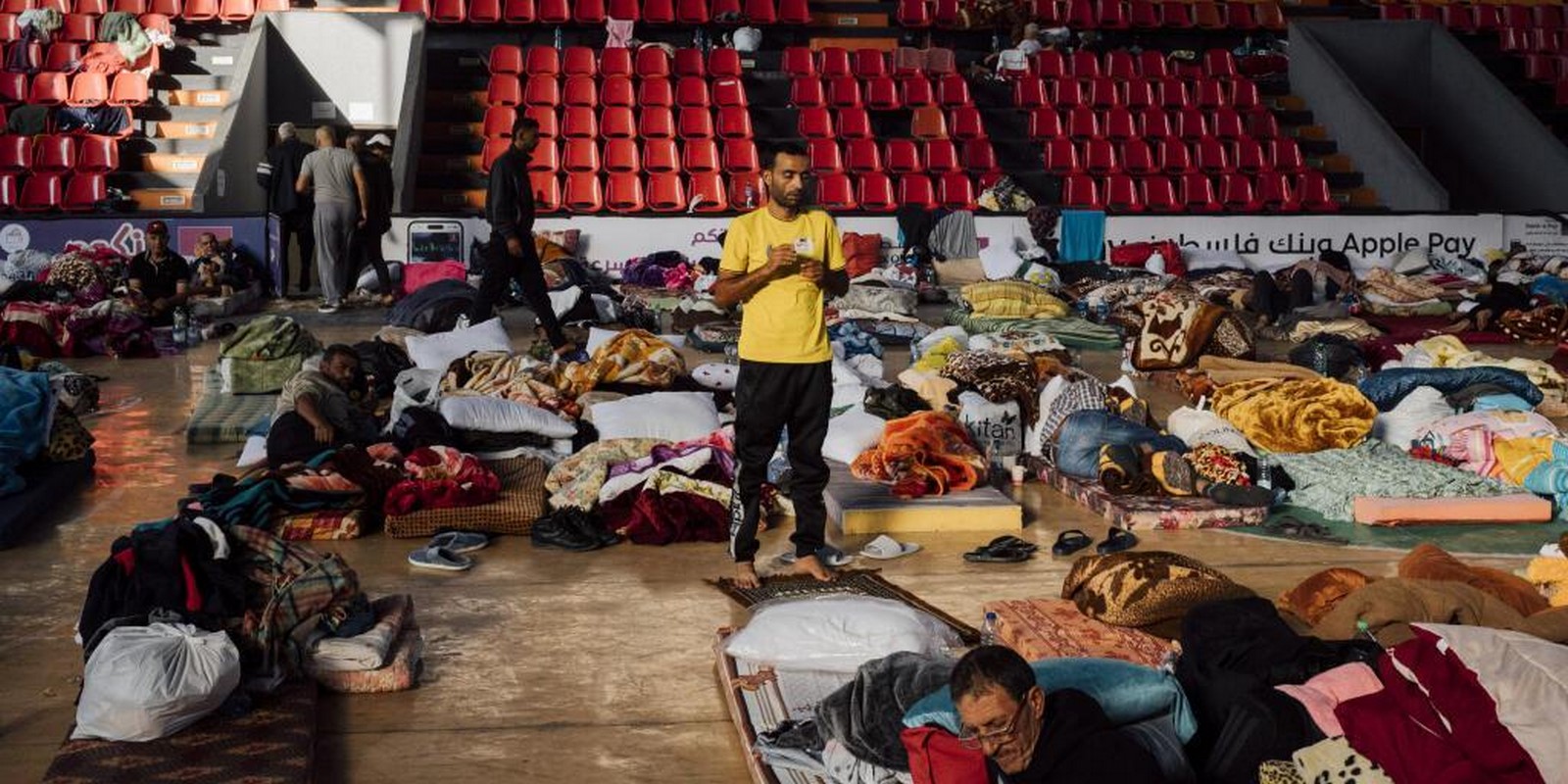
Military Camps
The Israel Defence Forces (IDF) have camps and bases throughout Israel, including the Gaza Strip. These camps serve as operational bases, established for the housing, training, and logistical support of armed forces during conflicts. These military camps require security and strategic planning of barracks, command centres, storage facilities, and infrastructure like roads and utilities to support military operations.
In contrast, as a non-state actor, Hamas does not have traditional military camps like a national army. Instead, they have a network of tunnels, buildings, and hidden facilities for military and civilian purposes throughout the Gaza Strip.

Architectural Environment Protection Initiatives
Local and international organisations, including UNESCO, ICOMOS, and humanitarian groups, may apply architectural environment protection initiatives during the Israel-Hamas war. These measures can include critical funding, expertise, and on-the-ground support for preservation initiatives such as covering artefacts to protect them, reinforcing structural elements to withstand potential damage, and securing sites against looting and vandalism, even in the face of ongoing hostilities. Their involvement is indispensable in moderating the possible damage caused by the Israel-Hamas war. International support will be crucial for restoration and rebuilding efforts post-Israel-Hamas war.
Access Restrictions
Israel-Hamas war-related security measures, such as curfews, checkpoints, and closed borders, significantly limit access to historical sites. Researchers, historians, and archaeologists find their fieldwork hampered by these restrictions, making it challenging to document and study these sites.
Legal and Ethical Considerations
Preserving cultural heritage has become an architectural and historical concern and a legal and ethical necessity during this Israel-Hamas war. The war is disrupting academic and research activities related to architectural and historical sites due to safety concerns, forcing scholars and researchers to pause ongoing projects and fieldwork.
Documentation and Digital Preservation
The loss of irreplaceable structures is highly probable; therefore, an urgency to document and assess the extent of the damage plays an important role in future preservation and rebuilding efforts. 3D scanning, photogrammetry, and GIS (Geographic Information Systems) mapping can create highly detailed records. Documenting, recording and digitally preserving these sites helps keep the landmarks alive by safeguarding the cultural heritage digitally while also allowing the sharing of cultural knowledge globally.
UNESCO Designation
Many historical sites in the region hold UNESCO World Heritage status. Palestine has four sites on the World Heritage List, all in the West Bank territory. Palestine also has 13 sites on the World Heritage List tentative list. Israel has nine sites, all of which are cultural, on the World Heritage List and 18 sites of natural and mixed heritage on the tentative list.
UNESCO World Heritage sites in the region may face the risk of removal from the prestigious list or inclusion on the list of World Heritage in Danger due to damage during the Israel-Hamas war. The implications reach beyond a loss of international recognition; it also affects funding opportunities for preservation and underscores the urgency of safeguarding these sites.
Conclusion
As the Israel-Hamas War of 2023 unfolds with far-reaching architectural impacts in the affected regions, leaving a trail of destruction and challenges, the ongoing challenges and future possibilities remain uncertain. The importance of architectural preservation and rebuilding efforts cannot be overstated for these war-torn regions.
There is a necessity for international support and cooperation to protect and restore the architectural environment to ensure that the legacy of these regions endures for generations to come.
Bibliography
Reference list
Al Awsat, A. (2023). Israel Army Fires Artillery at Lebanon as Hezbollah Claims Attack. [online] Aawsat.com. Available at: https://english.aawsat.com/arab-world/4591836-israel-army-fires-artillery-lebanon-hezbollah-claims-attack [Accessed 21 Oct. 2023].
Al Haq (2023). Living Archaeology in Gaza. [online] Forensic-architecture.org. Available at: https://forensic-architecture.org/investigation/living-archaeology-in-gaza [Accessed 20 Oct. 2023].
Al Jazeera (2023a). What Gaza infrastructure has been damaged since Israel declared war? [online] Aljazeera.com. Available at: https://www.aljazeera.com/news/2023/10/13/what-infrastructure-in-gaza-has-been-damaged-since-israels-assault [Accessed 20 Oct. 2023].
Al Jazeera (2023b). What happened in Israel? A breakdown of how Hamas attack unfolded. [online] Aljazeera.com. Available at: https://www.aljazeera.com/news/2023/10/7/what-happened-in-israel-a-breakdown-of-how-the-hamas-attack-unfolded [Accessed 17 Oct. 2023].
Al Lawati, A., McSweeney, E. and Ebrahim, N. (2023). Israel is at war with Hamas. Here’s what to know. [online] CNN. Available at: https://edition.cnn.com/2023/10/16/middleeast/israel-hamas-gaza-war-explained-week-2-mime-intl [Accessed 17 Oct. 2023].
Allweil, Y. (2018). The tent: The uncanny architecture of agonism for Israel-Palestine, 1910-2011. Urban Studies, [online] 55(2), pp.316–331. doi:https://doi.org/10.1177/0042098016682931.
Avermaete, T. and Abreek-Zubiedat , F. (2022). Concrete Conflicts: The Vicissitudes of an Ordinary Material in Modernizing Gaza City – Fatina Abreek-Zubiedat, Tom Avermaete, 2022. Journal of Urban History, [online] 48(5). doi:https://doi.org/10.1177/0096144220983037.
Balwani, M. (2021). Revitalising Gaza through Architecture and Agency – Catalyst. [online] Catalyst – International Development News, Features, and Opinions. Available at: https://catalystmcgill.com/revitalising-gaza-through-architecture-and-agency/ [Accessed 20 Oct. 2023].
BBC News (2019). Israel Gaza war: History of the conflict explained. [online] BBC News. Available at: https://www.bbc.com/news/newsbeat-44124396 [Accessed 17 Oct. 2023].
Berger, M. (2018). Gaza Has Amazing Historic Sites—If You Could Only See Them. [online] The Daily Beast. Available at: https://www.thedailybeast.com/gaza-has-amazing-historic-sitesif-you-could-only-see-them [Accessed 20 Oct. 2023].
Bshara, K. (2014). Architecture and Urban Planning in Palestine. [online] Interactive Encyclopedia of the Palestine Question. Available at: https://www.palquest.org/en/highlight/10514/architecture-and-urban-planning-palestine [Accessed 20 Oct. 2023].
Bucknell, A. (2018). Letter from Tel Aviv: the architecture reaching new heights in Israel’s cultural capital. [online] wallpaper.com. Available at: https://www.wallpaper.com/architecture/letter-from-tel-aviv-architecture-reaching-new-heights-in-2018 [Accessed 20 Oct. 2023].
Debre, I. (2023). What to know as war between Israel and Hamas rages on for a fifth day. [online] AP News. Available at: https://apnews.com/article/israel-gaza-hamas-militants-conflict-war-b6ea877aa1ee96303aa0870d741da777 [Accessed 19 Oct. 2023].
Delso, R. (2018). Concrete punishment: Time, architecture and art as weapons in the Israeli-Palestinian conflict. Political Geography, [online] 66(September 2018), pp.57–66. doi:https://doi.org/10.1016/j.polgeo.2018.08.012.
Ditmars, H. (2021a). As Palestinians Rebuild Following the Latest War Between Israel and Hamas, Housing Will Take Center Stage. [online] Architectural Digest. Available at: https://www.architecturaldigest.com/story/gaza-west-bank-housing [Accessed 20 Oct. 2023].
Ditmars, H. (2021b). Open Gaza: Architectures of Hope. [online] The Markaz Review. Available at: https://themarkaz.org/open-gaza-architectures-of-hope/ [Accessed 20 Oct. 2023].
Dreazen, Y. (2013). Can Architecture Help Solve the Israeli-Palestinian Dispute? [online] Smithsonian Magazine. Available at: https://www.smithsonianmag.com/innovation/can-architecture-help-solve-the-israeli-palestinian-dispute-224850/ [Accessed 20 Oct. 2023].
Elden, S. (2022). The Common Camp. University of Minnesota Press. Available at: https://www.upress.umn.edu/book-division/books/the-common-camp#:~:text=Focusing%20on%20the%20geopolitical%20complexity,a%20makeshift%20space%20of%20resistance. [Accessed 20 Oct. 2023].
Esleem, R. (2023). Qasr al-Basha brings together many civilizations. [online] JINHAGENCY News. Available at: https://jinhaagency.com/en/art-and-culture/qasr-al-basha-brings-together-many-civilizations-31623 [Accessed 20 Oct. 2023].
Fabian, E. (2023). Israel carrying out artillery strikes in Syria after mortar fire. [online] Timesofisrael.com. Available at: https://www.timesofisrael.com/liveblog_entry/israel-carrying-out-artillery-strikes-in-syria-after-mortar-fire/ [Accessed 21 Oct. 2023].
Farag, M. (2023). Gaza’s heritage sites lie in ruins as war rages on. [online] The National. Available at: https://www.thenationalnews.com/mena/2023/10/20/destruction-everywhere-leaves-gazas-heritage-sites-in-ruins/ [Accessed 22 Oct. 2023].
Farraj, B. (2023). The Common Camp: Architecture of Power and Resistance in Israel-Palestine and The Palestinian Prisoners Movement: Resistance and Disobedience. Journal of Palestine Studies, [online] 52 – 2023(2). doi:https://doi.org/10.1080/0377919X.2023.2216591.
Google Books (2022). The Common Camp. Google Books. Available at: https://books.google.pl/books/about/The_Common_Camp.html?id=NJF8EAAAQBAJ&source=kp_book_description&redir_esc=y [Accessed 20 Oct. 2023].
Hawari, Y. (2022). Israel’s archaeological war on Palestinian cultural heritage. [online] The New Arab. Available at: https://www.newarab.com/analysis/israels-archaeological-war-palestinian-cultural-heritage [Accessed 20 Oct. 2023].
IMEU (2022). Israel’s Environmental Apartheid in Palestine. [online] Imeu.org. Available at: https://imeu.org/article/environmental-apartheid-in-palestine#:~:text=Some%20of%20the%20environmental%20effects,loss%20of%20biodiversity%2C%20and%20flooding. [Accessed 20 Oct. 2023].
Katz, I. (2017). Architecture of Control and Struggle: Camps and the Reordering of Populations and Territories in Israel-Palestine. ABE Journal. Architecture beyond Europe, [online] 12(2017). doi:https://doi.org/10.4000/abe.3966.
Katz, I. (2021). Anti-collage cities in Israel-Palestine – Architectural Review. [online] Architectural Review. Available at: https://www.architectural-review.com/essays/anti-collage-cities-in-israel-palestine [Accessed 20 Oct. 2023].
McKernan, B. and Michaelson, R. (2023). Violence hits East Jerusalem and West Bank as Israel orders Gaza evacuation. [online] the Guardian. Available at: https://www.theguardian.com/world/2023/oct/13/violence-erupts-across-occupied-east-jerusalem-amid-israel-gaza-evacuation-order [Accessed 21 Oct. 2023].
Mudede, C. (2021). Gaza, a Surprising Model for Urban Living. [online] YES! Magazine. Available at: https://www.yesmagazine.org/issue/how-much-is-enough/2021/08/10/gaza-climate-change-urban-living [Accessed 20 Oct. 2023].
Paddison, L. (2023). Gaza explained: What to know about the enclave. [online] CNN. Available at: https://edition.cnn.com/2023/10/15/middleeast/gaza-history-explained-intl/index.html [Accessed 20 Oct. 2023].
Pasquini, E. (2022). Palestinian Architecture as Resistance, Identity. Washington Report on Middle East Affairs (WRMEA), [online] 2 Sep., pp.56–57. Available at: https://www.wrmea.org/israel-palestine/palestinian-architecture-as-resistance-identity.html [Accessed 20 Oct. 2023].
Public Space (2005). Walking through walls: Soldiers as architects in the Israeli/Palestinian conflict. In: PublicSpace. [online] Arxipelago of Exception. Sovereignties of extraterritoriality. Public Space. Available at: https://www.publicspace.org/multimedia/-/post/walking-through-walls-soldiers-as-architects-in-the-israeli-palestinian-conflict [Accessed 20 Oct. 2023].
Roche, D. (2023). How are architects responding to the war in Palestine? [online] The Architect’s Newspaper. Available at: https://www.archpaper.com/2023/10/how-are-architects-responding-to-the-war-in-palestine-issue-statements/ [Accessed 20 Oct. 2023].
Sharp, D., Al Qudwa, S. and Sabbagh, M. (2021). Designing a Hopeful Vision for Gaza. [online] YES! Magazine. Available at: https://www.yesmagazine.org/opinion/2021/09/03/gaza-hopeful-vision [Accessed 20 Oct. 2023].
Special series (2014). Israel: The architecture of violence. [online] Aljazeera.com. Available at: https://www.aljazeera.com/program/rebel-architecture/2014/9/2/israel-the-architecture-of-violence [Accessed 20 Oct. 2023].
Terreform (2013). Open Gaza. [online] Terreform – Centre for Advaned Urban Research. Available at: https://www.terreform.info/open-gaza [Accessed 20 Oct. 2023].
Zeidan, A. (2023). Gaza Strip | Definition, History, Facts, & Map | Britannica. In: Encyclopædia Britannica. [online] Available at: https://www.britannica.com/place/Gaza-Strip [Accessed 20 Oct. 2023].
Image List
- Map showing areas of the Israel-Hamas 202 war.
Zywotkiewicz, T. (2023). Israel-Hamas 2023 War Zone Map. Author’s own illustration.
- People perform Friday prayers on the street as police prevent entrance to the al-Aqsa mosque complex.
Alkharouf, M. (2023). Palestinian sources: ‘citizens performed Friday prayers at Al-Aqsa Mosque’ [مصادر فلسطينية: ‘5 آلاف مواطن فقط أدوا صلاة الجمعة في المسجد الأقصى‘]. Aakherkhabar.net. Available at: https://aakherkhabar.net/article/3611168 [Accessed 24 Oct. 2023].
- A destroyed mosque in Khan Younis, Gaza Strip.
Masoud, Y. (2023). These Floridians were in the region as the latest Israel-Hamas war began. Tampa Bay Times. Tampa Bay Times. Available at: https://www.tampabay.com/news/florida/2023/10/11/south-florida-israel-hamas-palestine-west-bank/ [Accessed 22 Oct. 2023].
- More than one million people are said to have been displaced in the Gaza strip within a week.
Hams, M. (2023). One million Gazans displaced as Israel readies for ground attack. France 24. FRANCE 24. Available at: https://www.france24.com/en/live-news/20231015-israel-readies-for-gaza-invasion-as-civilians-flee [Accessed 22 Oct. 2023].
- A tent camp at a United Nations-run centre, in Khan Younis in the southern Gaza Strip.
Masoud, B. (2023). What’s happening on Day 13 of the Israel-Hamas war. PBS NewsHour. Available at: https://www.pbs.org/newshour/world/live-updates-whats-happening-on-day-13-of-the-israel-hamas-war [Accessed 22 Oct. 2023].
- Palestinian citizens from Gaza sleeping in a shelter in the West Bank.
Lung, L. (2023). Israel-Hamas war: In the West Bank, the anguish of Gazan workers expelled from Israel. Le Monde.fr. Le Monde. Available at: https://www.lemonde.fr/en/international/article/2023/10/13/israel-hamas-war-in-the-west-bank-the-anguish-of-gazan-workers-expelled-from-israel_6170877_4.html [Accessed 22 Oct. 2023].
- Near the border with the Gaza Strip, in southern Israel, Israeli soldiers work on a tank at a staging area.
Zwigenberg, O. (2023). Rocket attacks continue from Gaza, Lebanon as Hamas war enters third week. Timesofisrael.com. Available at: https://www.timesofisrael.com/liveblog-october-21-2023/ [Accessed 22 Oct. 2023].



